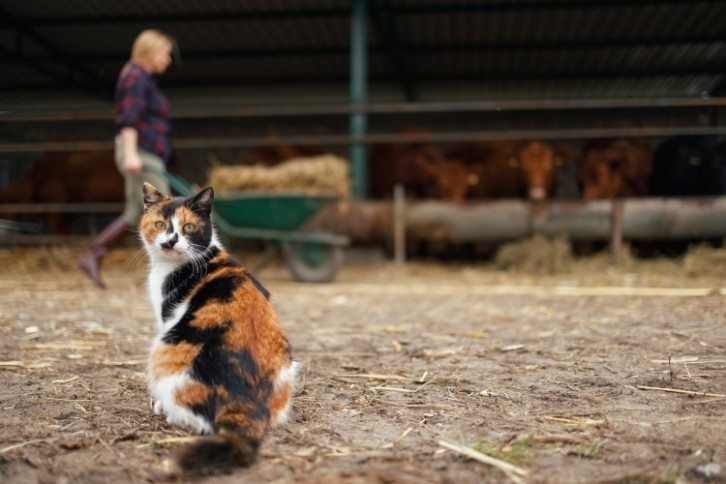[ad_1]
US veterinarians that investigated the unexplained deaths of cats on a Texas dairy farm have concluded that cows contaminated with fowl flu can transmit the virus to different mammals by uncooked milk.
Whereas instances of home cats contaminated with fowl flu – sometimes transmitted from birds – are well-documented, that is the primary time vets have linked the sickness in cats with publicity to contaminated uncooked milk.
The breakthrough adopted a multi-state collaboration during which vets labored across the clock to search out out why cats have been dying or disappearing at dairy farms with reported infections of extremely pathogenic avian influenza (HPAI) H5N1 in cattle.
“HPAI virus an infection ought to be thought-about in dairy cattle when an sudden and unexplained abrupt drop in feed consumption and milk manufacturing happens and for cats when speedy onset of neurologic indicators and blindness develop,” defined lead researcher Dr. Eric Burrough.
Samples from cats that had died on a Texas farm have been examined on the Iowa State College Veterinary Diagnostic Laboratory (ISUVDL), with related units of samples obtained from cattle positioned in affected dairies in Kansas. The identical virus – HPAI H5N1 – was present in each species together with within the uncooked cow’s milk that was fed to the cats.
Whereas the contaminated dairy cattle exhibited principally gentle signs, greater than half of the in poor health cats ultimately died.
Signs particular to cats included blindness and chorioretinal lesions (a kind of eye irritation), with neurological indicators and dying growing quickly.
After testing tissue and milk samples from cows and cats, the researchers discovered microscopic lesions in each species, with cats’ lesions being ‘in line with extreme systemic virus an infection’, together with indicators of lung, coronary heart and eye injury.

In the meantime, the examined uncooked milk was discovered to include a excessive viral load and is considered the first purpose why the cats turned contaminated.
The discovering raises questions on how infectious uncooked milk from sick cows is and the chance for virus transmission it represents to different mammals on dairy farms mammals. Further analysis is required to verify how the virus spreads from dairy cattle to cats and different species.
“In conclusion, we confirmed that dairy cattle are prone to an infection with HPAI H5N1 virus and may shed virus in milk and, due to this fact, would possibly doubtlessly transmit an infection to different mammals by way of unpasteurized milk,” the researchers acknowledged.
“The recurring nature of world HPAI H5N1 virus outbreaks and detection of spillover occasions in a broad host vary is regarding and suggests rising virus adaptation in mammals. Surveillance of HPAI viruses in home manufacturing animals, together with cattle, is required to elucidate influenza virus evolution and ecology and forestall cross-species transmission.”
Supply:
Burrough ER, Magstadt DR, Petersen B, Timmermans SJ, Gauger PC, Zhang J, et al. Extremely pathogenic avian influenza A(H5N1) clade 2.3.4.4b virus an infection in home dairy cattle and cats, United States, 2024. Emerg Infect Dis. 2024 Jul [02 May 2024].
[ad_2]

